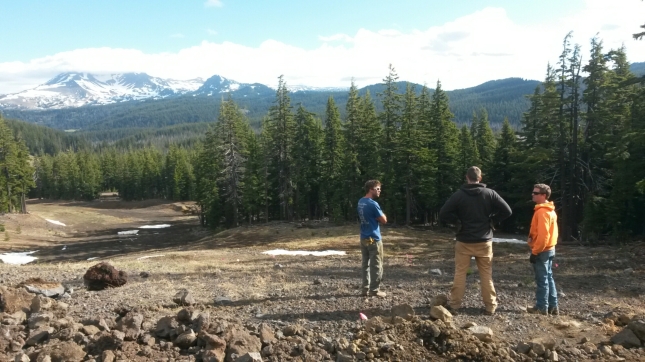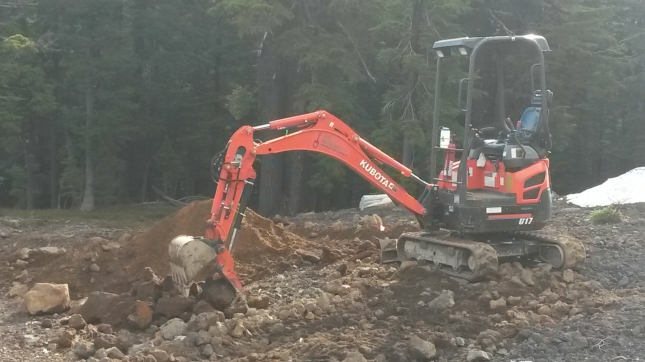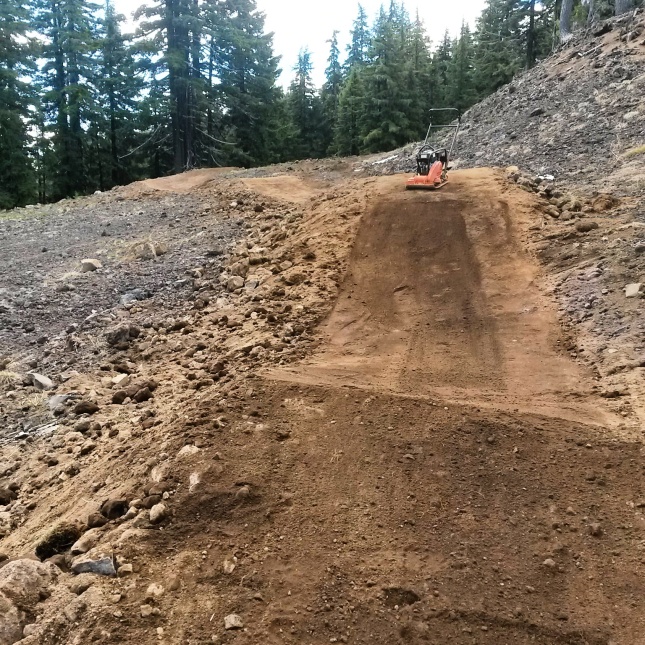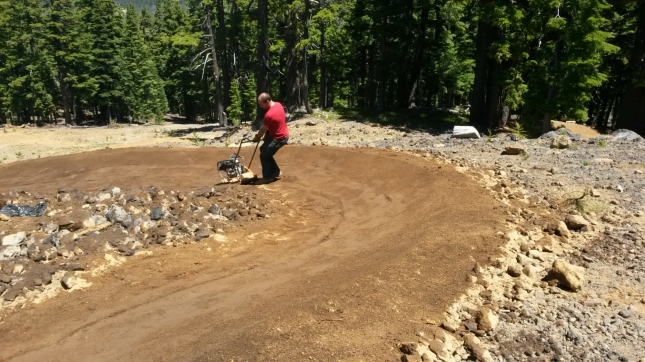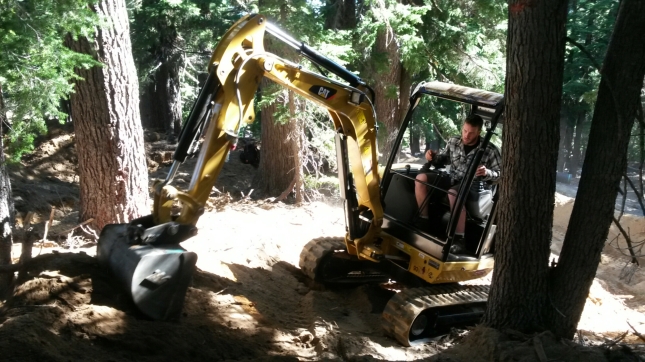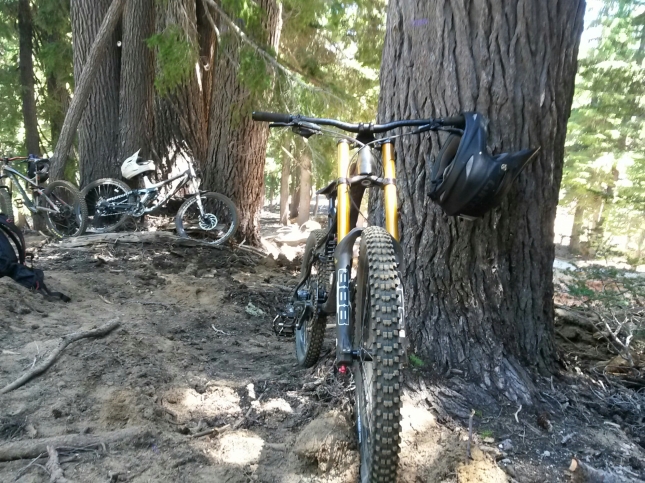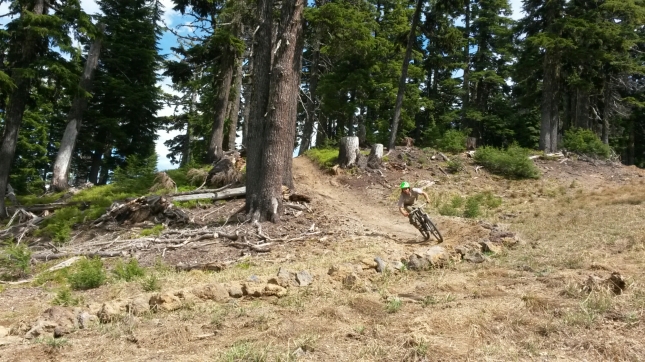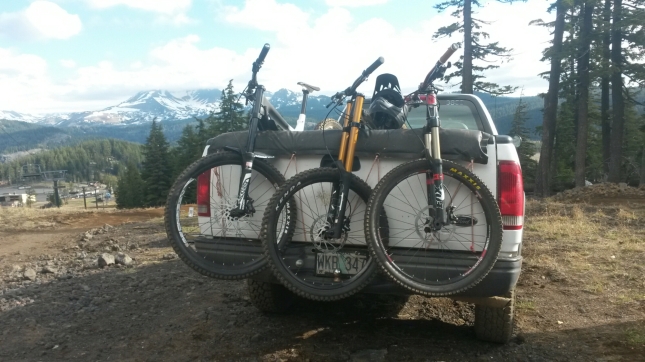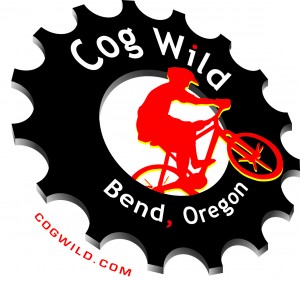(Dan, the newest member of the Trail Crew, test riding on Last Chance in the days before our soft opening)
As September began, we trail crew was in full swing in our last efforts to open up the trails we had only begun to build 2 short months ago. We all upped our workload to 5 ten hours worked days a week, an effort that forced us all to dig deep as we gave the trails everything we had in us, just so that we could open the trails we said we would. We hit the trail system with as much energy as we had on the day to day battle against ourselves and the terrain in which we were attempting to create these new trails for the public’s enjoyment. We saw ourselves pushed both mentally and physically as we attempted to work together in this last push to make the most of all our summers efforts before the critiques of those who never even lifted a shovel came rolling off there tongues and into our minds. We were all proud of the hard work we had put into the side of this volcano over the last 2 months, which left us all sensitive to the opinions of others, and some amount of anxiety welled up in us as the final countdown to opening was upon us.
Trails that were planned to be open for opening weekend:
Lava Flow (machine built blue flow trail)
Rattle Snake (hand built black downhill single-track)
Blade Runner (connector trail to get back to West Village Lodge and Pine Marten Lift)
Last Chance (hand built, black diamond single-track, more enduro than downhill at this point in the building process)
Cone Run (machine built connector trail for the first season to get people off of Lava Flow and back to West Village Lodge and Pine Marten Lift)
We focused most of our trail building attention and energy in two fronts, one group of us out pounding away at Last Chance, while the other group ran water truck laps to assist the pate compactor in it’s mission to turn all the machine built trail into a good hardened riding surface. The days were long, and we all ended up beaten down at different times, having to take up the slack of those who didn’t have it in them on any particular day. We really worked on operating as a team for the most part, sure we did not all get along the greatest, but for the most part by this time we had all become friends and found mutual respect for each other and what we brought to the trail crew as a whole.
(Last Chance, with South Sister and Broken Top in the background)
The learning curve became more mellow as the days rolled into weeks and we began to not only seen and better understand the flow of the terrain and land, but also to understand how to approach building turns and berms, which was something that at first we were building too small and sharp to be able to really carry or gain speed through them. everyday we worked long hard hours that brought us closer and closer to the goal in sight, to be able to ride all the trails that we had been working on all summer by the soft opening day on September 13th 2013.
(test rides, looking at the line and what needs to change to make it work better, and trail crew critiques)
Trail Crew cohesion also began to strengthen as more of us spent time together riding the trails together at the end of the day and going out for beers after work, which helped the work environment become more and more productive since we began to value each others input more as the season ran along. It was a pleasant change from the beginning of the building season when none of us really knew each other very well, so making decisions on what to do in certain complicated trail building situations began to take less time and the building also saw some serious improvement as well.
(Last Chance, with Mt. Bachelor’s summit in the background)


















































